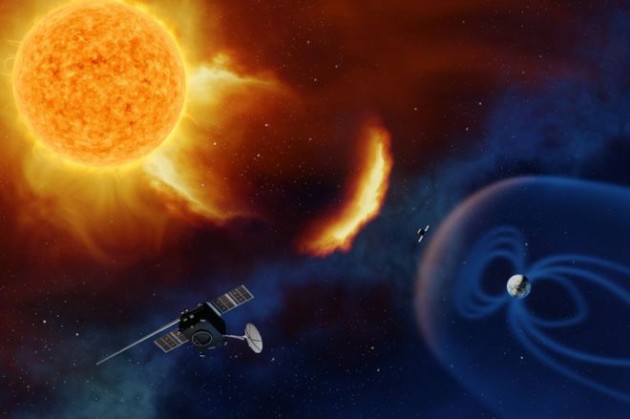Design call for ‘solar sentinel’ mission
 Jonathan Amos / Feb 02: UK scientists and engineers will play a leading role in developing a satellite that can warn if Earth is about to be hit by damaging solar storms.
Jonathan Amos / Feb 02: UK scientists and engineers will play a leading role in developing a satellite that can warn if Earth is about to be hit by damaging solar storms.
The European Space Agency has requested studies be undertaken to design the mission that would launch in the 2020s.
Explosive eruptions from the Sun can lead to widespread disruption on our planet – degrading communications, even knocking over power grids.
The satellite’s observations would increase the time available to prepare.
Esa has a working name for the new mission – “Lagrange”, which reflects the position the satellite would take up in space.
The plan is to go to a gravitational “sweetspot” just behind the Earth in its orbit around the Sun known as “Lagrangian Point 5”.
Spacecraft that are sited there do not have to use so much fuel to maintain station – but there is an even bigger operational rationale to use this location: it is the perfect spot to see that part of the Sun which is about to rotate into view of the Earth.
“So, not only do you get a preview of the active regions and how complicated they are, but if the Sun throws something out you also get to track it from the side,” explained British solar physicist Prof Richard Harrison.
“Imagine a fist coming directly at your face – it’s difficult to say how far away it is; but if you see that fist from the side, it’s much easier,” he told BBC News.
Esa signed four so-called Phase AB1 contracts on Friday at its mission control centre in Darmstadt, Germany.
These include two parallel industrial studies – to be led by Airbus UK and OHB System of Germany – to spec the spacecraft bus, or chassis, and the process for integrating all the satellite’s instruments.
The aerospace companies will also work out how the entire mission would be managed, from launch to the end of service life.
The actual design of the onboard instruments is the subject of the other two contracts. Both of these will be directed by British-led consortia.
RAL (Rutherford Appleton Laboratory) Space will assess the requirements of the mission’s “remote sensing package” – that is, the instruments that discern what the Sun is doing by looking at it.
The UK’s Mullard Space Science Laboratory (MSSL) will scope the “in-situ package” – those instruments that investigate the Sun’s activity by directly sensing emitted particles and magnetic fields.
Although led from Britain, these efforts will of course draw on talents from across European member states. BBC.com
